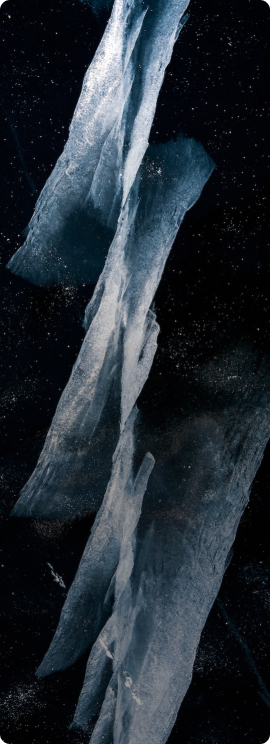.webp)
Japan's rich cultural heritage extends to its vibrant music scene, which features a diverse array of traditional instruments. From the delicate melodies of the koto to the thunderous beats of the taiko drum, each instrument carries centuries of history and tradition. Explore the captivating world of traditional Japanese instruments—unveiling their origins, distinct features, and cultural significance. From the haunting melodies of the shamisen to the ethereal tones of the shakuhachi flute, delve into Japan's musical heritage and global impact. Join us for a journey into the soul of Japanese music.
Sign Up Now!
1. Shamisen:
The shamisen is a three-stringed instrument with a distinct twangy sound. Its origins can be traced back to China, but it found its way to Japan in the 16th century and became an integral part of traditional Japanese music. The shamisen is typically played with a plectrum called a bachi and is commonly used in various genres, including folk, classical, and theater music.
2. Koto:
The koto is a traditional Japanese string instrument with a long history dating back over a thousand years. It features 13 silk strings stretched over a wooden frame, producing a mesmerizing sound reminiscent of flowing water. The koto is often played with picks worn on the fingers, allowing for intricate melodies and embellishments. It is a staple of traditional Japanese music and is frequently used in solo performances and ensemble settings.
3. Shakuhachi:
The shakuhachi is a bamboo flute with a hauntingly beautiful sound. Originally used by Buddhist monks as a meditation tool, the shakuhachi later evolved into a musical instrument capable of conveying a wide range of emotions. Its simple design belies its complexity, requiring precise breath control and embouchure to produce different pitches and tones. The shakuhachi is often associated with traditional Japanese music, but it has also found its way into contemporary genres and experimental music.
4. Taiko:
Taiko drums hold a special place in Japanese culture, symbolizing power, unity, and spirituality. These large drums, often made from hollowed-out tree trunks and animal skins, produce thunderous beats that reverberate through the air. Taiko drumming is a highly physical art form, requiring strength, endurance, and precise rhythmic coordination. Taiko performances are a sight to behold, featuring dynamic movements and synchronized drumming that captivate audiences worldwide.
5. Biwa:
The biwa is a lute-like instrument with a pear-shaped body and fretted neck. It has a long history in Japan, dating back to the 7th century, and is associated with storytelling and narrative music. The biwa was traditionally used by blind musicians known as biwa hōshi to accompany epic tales and historical narratives. Its mournful tones evoke a sense of nostalgia and longing, making it a poignant instrument in Japanese culture.
6. Tsugaru Shamisen:
Originating from the Tsugaru region of northern Japan, the Tsugaru shamisen is a distinct style of shamisen playing known for its energetic and improvisational nature. Unlike the traditional shamisen, the Tsugaru shamisen features thicker strings and a larger plectrum, allowing for powerful strikes and dynamic performances. Tsugaru shamisen players often incorporate percussive techniques and rhythmic patterns, creating a mesmerizing fusion of music and movement that captivates audiences.
7. Hichiriki:
The hichiriki is a double-reed instrument with a piercing yet expressive sound. It is commonly used in traditional Japanese gagaku music, which dates back over a thousand years and is considered one of the world's oldest orchestral forms. Gagaku music combines elements of indigenous Japanese music with influences from China, Korea, and India, resulting in a rich tapestry of sounds and textures. The hichiriki plays a central role in gagaku ensembles, adding color and depth to ceremonial and courtly performances.
8. Fue:
The fue is a traditional Japanese flute made of bamboo, with a bright and airy tone. It is one of the oldest instruments in Japan, dating back to ancient times, and is used in various musical genres, including folk, classical, and theatrical music. The fue comes in different sizes and pitches, allowing for a wide range of melodies and harmonies. It is often played in ensembles alongside other traditional instruments, creating a harmonious blend of sounds that evoke the beauty of nature and the seasons.
9. Kotsuzumi and Ōtsuzumi:
The kotsuzumi and ōtsuzumi are traditional Japanese hand drums used in classical music and theater performances. The kotsuzumi, also known as the small drum, has a hourglass shape and is played with one hand using a stick called a bachi. It produces a sharp and crisp sound that punctuates the rhythm of the music. The ōtsuzumi, or large drum, is larger in size and produces a deeper and more resonant sound. Together, these drums provide the rhythmic backbone of classical Japanese music, enhancing the drama and intensity of performances.
10. Sanshin:
The sanshin is a traditional Okinawan instrument similar to the shamisen, but with a unique construction and playing style. It features three strings stretched over a snakeskin-covered body and is played with a pick called a bachi. The sanshin has a warm and soulful sound that reflects the spirit of Okinawan culture and music. It is often used in folk songs and dances, as well as in contemporary Okinawan music genres such as min'yō and ryūkyū min'yō.
Buy Japanese Musical Instruments Online
Conclusion:
Traditional Japanese instruments offer a window into Japan's rich cultural heritage, providing a glimpse into centuries-old traditions and artistic expressions. From the graceful melodies of the koto to the thunderous rhythms of the taiko drum, each instrument carries its own unique sound and significance. Whether you're a music enthusiast or simply curious about Japanese culture, exploring these instruments can deepen your appreciation for the beauty and diversity of the musical world.


